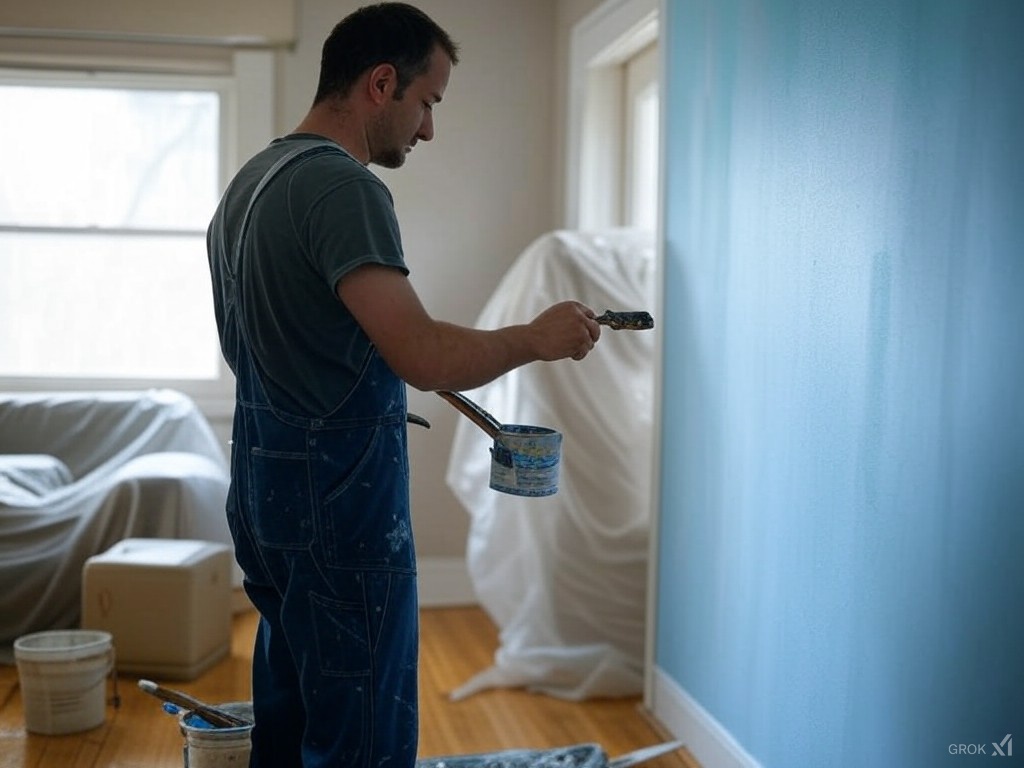If you have decided to hire an interior painter, there are several things that you should keep in mind. This article will provide you with information about the process and costs of hiring a professional. You should also be aware of the skills that an interior painter needs to perform a job. You should also be aware of indirect costs, which are not covered by the actual price. Click here for more info.
Costs of
The costs of hiring an interior painter vary depending on the area of your home and the amount of paint you want to use. In general, the more prep work the painter must do, the more he or she will charge. This work includes scraping off any old paint and repairing damaged trim and walls. In addition, textured walls require more paint for adequate coverage. If you’re not sure what kind of texture you want, you can send a photo to the painter so that they can give you an accurate quote.
During off-peak seasons, painting contractors will charge less. In summer, painting contractors have a lot of work. So, if you’re looking to save, try to schedule your project during off-peak times. For example, if you’re renting your home, you may need to repaint it before moving out.
Skills required
The skills required for an interior painter are varied, but one thing that a majority of these jobs have in common is the need for attention to detail. A keen eye for detail is vital for a painter, as it will help him or her create something unique, which in turn will impress the client. Other important skills include good communication and listening skills, which will help you relate with people and solve problems.
The skills required for an interior painter will vary depending on the type of job that you want. Some jobs require extensive experience while others require minimal training. Some painter positions require specialized knowledge, but you can always start by checking out job descriptions to see if your background and strengths match the requirements.
Another important skill that an interior painter should have is the ability to think creatively. In some jobs, you will have to come up with unique solutions for problems. For example, you may have to paint in sections for a large mural, which may require you to think of an innovative way to solve the issue.
Estimate process
The first step to estimating the job for an interior painter is determining the square footage of the painting area. This can be determined by multiplying the width and length of the room. Then, divide that number by two. A good estimate should include both labor and materials. It should also take into account any extras that may be required for the project.
The type of paint used will also have an impact on the cost of the job. If you’re painting dark colors, you may need to apply a primer before applying the paint. Also, if the walls have never been painted, you’ll need additional coats of paint. A thorough estimate will include these details and will help you decide how many workers to hire.
Once you have figured out the basic room measurements and the number of rooms to be painted, you can move on to developing an estimate. You can use a formula that works for thousands of painters. This method allows you to create an estimate that is realistic and profitable for you. You can also use an online estimating software to make the process of creating estimates quick and easy.
Indirect costs
Indirect costs are expenses that are not directly related to a specific project. They include equipment payments, rent, utilities, and benefits for crew members. These costs vary depending on the type of paint and the location of the painting job. Indirect costs are often overlooked until a client requests an estimate. In this article, we’ll look at the most common indirect costs and their potential impact on a project’s price.
While direct costs are what you might expect, indirect costs are often even higher. Studies have shown that for every dollar spent on direct costs, another dollar is spent on indirect costs. For example, a single day of downtime can cost as much as $1000, and relocating a customer can be costly. Another indirect cost may be the cost of remediating a building contaminated by lead-based paint or asbestos. Likewise, hazardous waste cleanups can have hidden costs. There’s also a “Cradle to Grave” liability involved with hazardous waste.
Indirect costs can be difficult to determine, but a painting contractor’s total overhead costs should be kept in mind. Painting contractors typically make between twenty and thirty percent of the cost of a job. Some painting contractors may even include marketing expenses in their markup. To avoid unexpected costs, round up the total fee to account for any extra expenses. You can even use online estimators to get a good idea of the total cost of a job.

